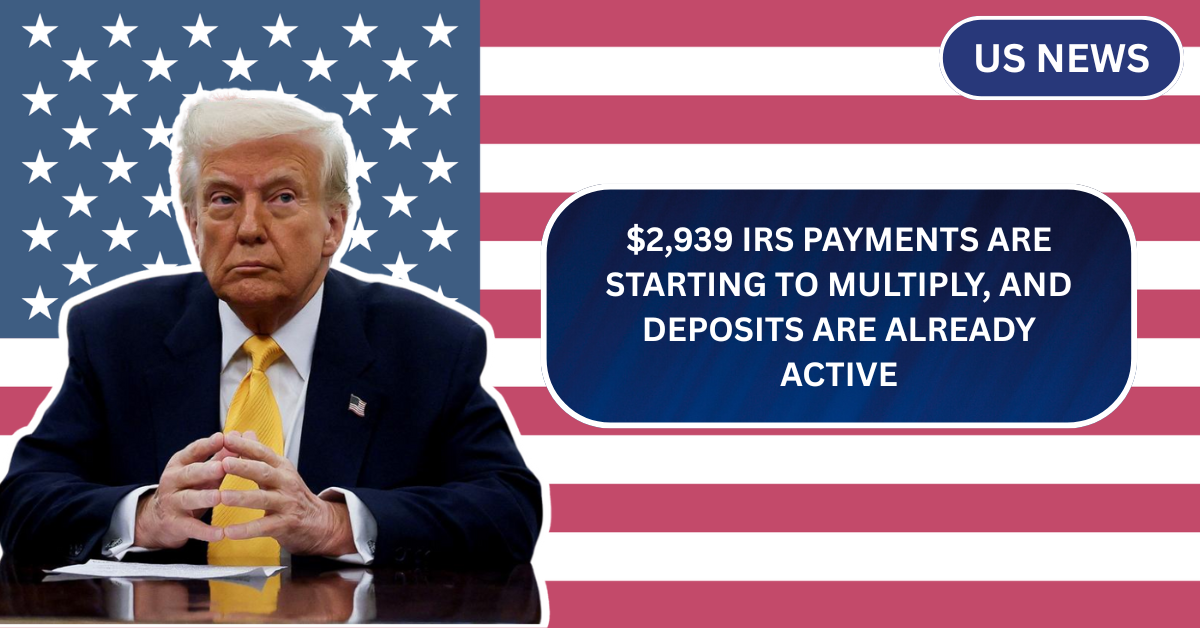The IRS has officially started issuing $2,939 payments to qualified Americans, and many recipients are already seeing the money hit their bank accounts. If you’re one of the people waiting for this deposit, now’s the time to check your status, as the payments are going out in multiple batches throughout June 2025.
This payment isn’t a traditional stimulus check, but it’s just as important. Here’s everything you need to know—who’s getting it, why, and how you can check if your money is on the way.
What Is the $2,939 IRS Payment?
The $2,939 payment is part of ongoing IRS disbursements linked to various federal benefits, including Social Security, tax credits, and other eligible programs. For some individuals, it may include delayed refunds, corrected amounts from previous returns, or adjustments related to specific IRS filings.
The IRS has not tied this payment to any new stimulus bill, but it falls under the automated refund corrections and scheduled benefit payments being processed as part of the 2025 tax cycle.
Who Is Eligible for the $2,939 Payment?
Eligibility for the $2,939 payment depends on a few key factors:
- Social Security Recipients: If you receive SSDI, SSI, or retirement benefits, you may be part of this payment batch.
- Tax Filers Owed Refunds: Some taxpayers who filed earlier and had adjustments made may receive this amount as part of a corrected refund.
- Earned Income Tax Credit (EITC) or Child Tax Credit (CTC) Filers: Families with low to moderate income who qualified for these credits in their 2024 tax returns may receive this boost.
- Veterans and Disabled Citizens: Individuals receiving VA benefits or long-term disability support might also qualify for this payout.
Note: The IRS sends these payments automatically, so there’s no need to apply or register.
When Are the Payments Being Sent?
The IRS confirmed that direct deposits began the third week of June 2025, with paper checks expected to follow shortly after. The timeline for the full distribution will continue through early July, depending on banking systems and mail delivery times.
To track your payment:
- Visit the official IRS “Where’s My Refund” or “Get My Payment” tool on irs.gov
- Have your Social Security Number, filing status, and refund amount ready.
What If You Haven’t Received It Yet?
If you’re eligible and haven’t seen the deposit yet:
- Wait at least 5–7 business days, as payments are being made in stages.
- Check with your bank for any pending transactions.
- Confirm your banking details on your last filed tax return are correct.
- Use the IRS tool to track your payment or call their hotline if needed.
Keep in mind, paper checks take longer. If you’re receiving benefits through the Direct Express card, you should also monitor your balance over the coming days.
Why Is This Payment Important Right Now?
With the rising cost of living, inflation pressures, and higher energy bills across the U.S., this $2,939 payment offers much-needed relief for many households. While it’s not labeled as a stimulus, it feels like one for many Americans dealing with tight monthly budgets.
If you’re struggling with bills or food costs, this deposit can help stabilize your expenses—even temporarily.
Stay Alert for Scams
As always, with government payments, scams increase. The IRS will never call, text, or email you asking for personal information to release your funds. Be cautious and rely only on official government websites and verified sources for updates.
Bottom Line
The $2,939 IRS payments are real, active, and already reaching thousands of Americans. If you’re eligible, your deposit might already be on its way—or in your account now. Don’t forget to check your balance, monitor your mail for paper checks, and use the IRS portal to stay updated.




